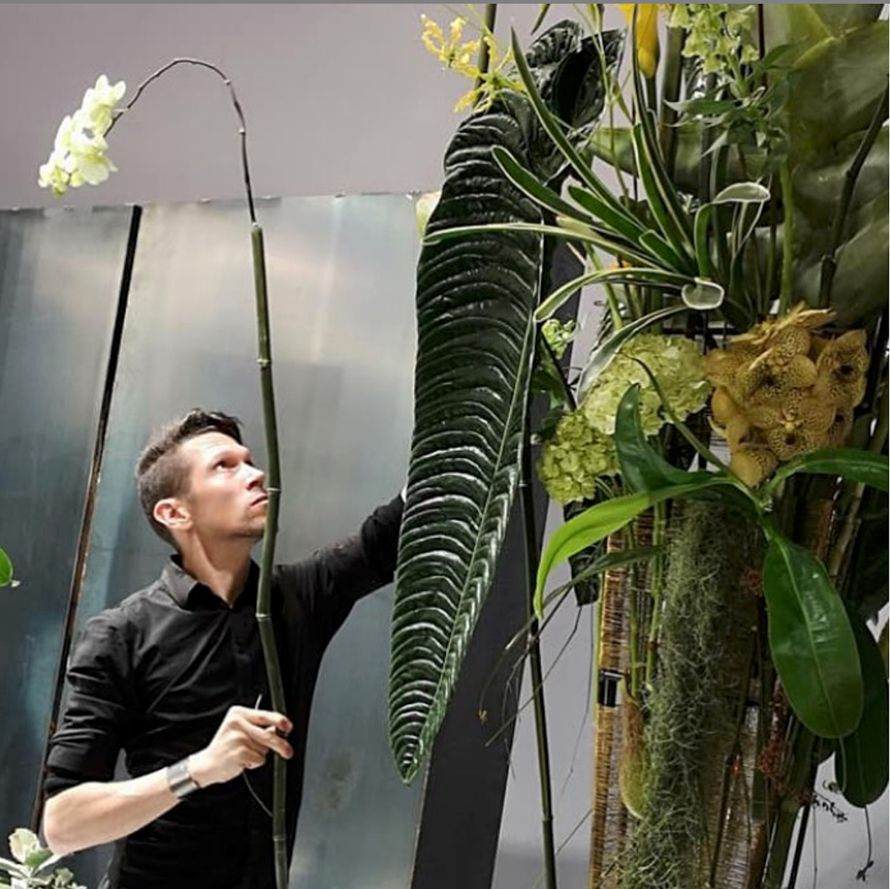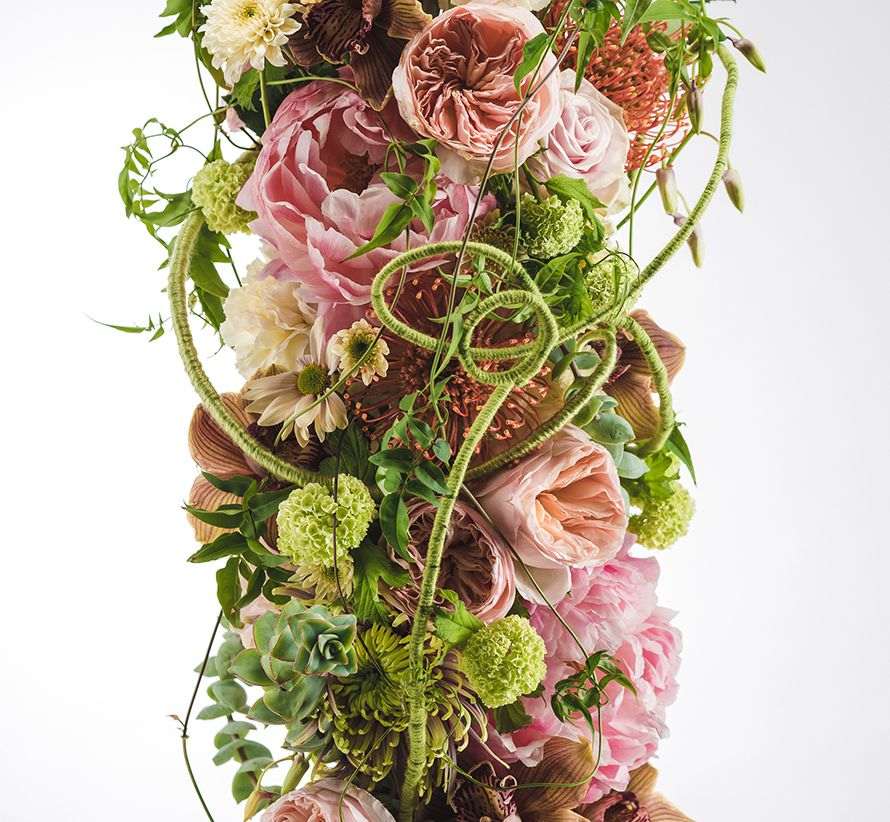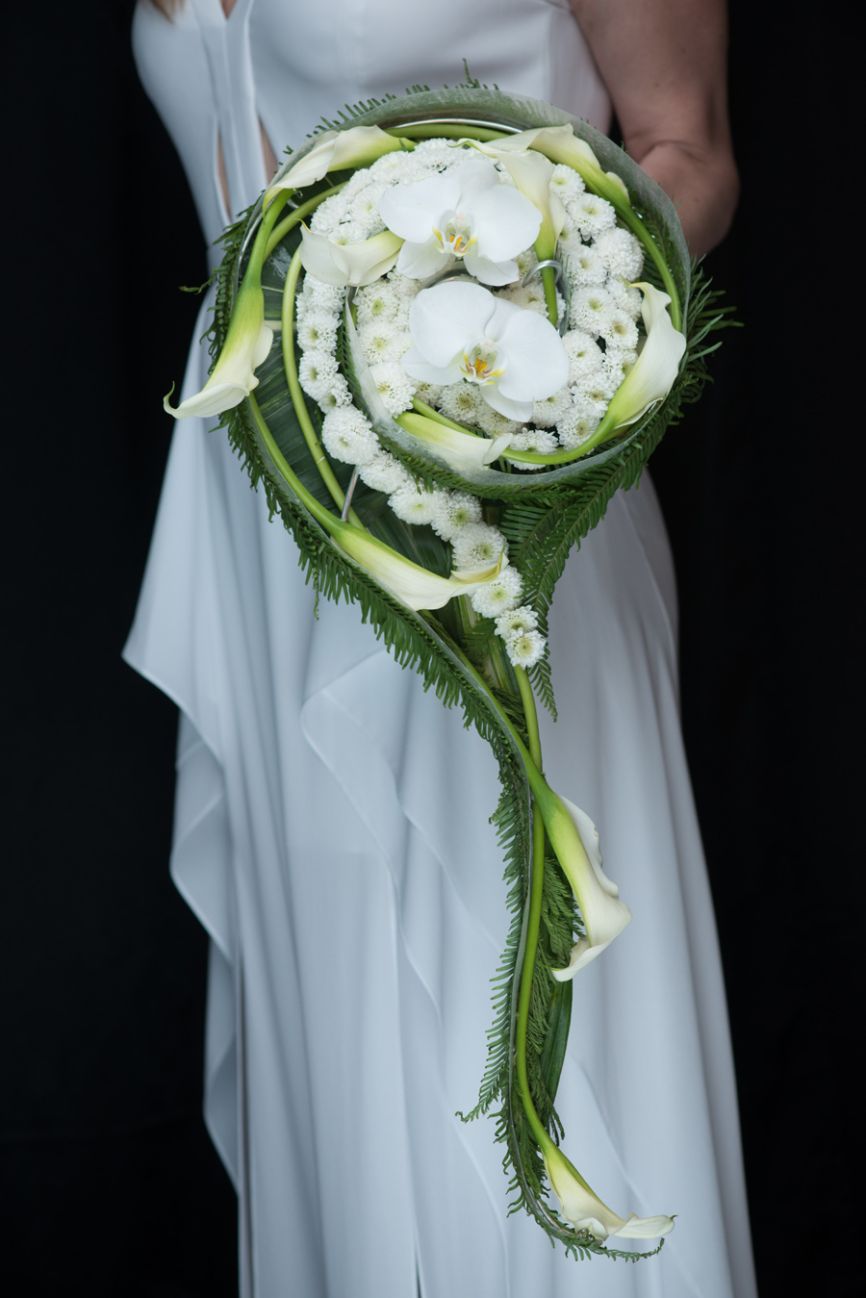
Plants in Floral Designs and Décor – A Growing Trend
Have you noticed that designs and décor featuring plants, foliage and cut plant materials are rising in popularity?
Plants add life to interior spaces. They’re a hot topic online, in magazines and at the World Cup competition.

Sustainable, ethical, natural and organic are the buzzwords of today’s floral shopper. What’s at the core of this emerging trend? A true appreciation of nature and natural materials.
Including these natural trendsetters in your designs and displays can help grow your floral business.
World class advice
What’s driving this new focus on foliage? Which techniques are needed to incorporate large plant materials into on-trend designs?
When Australian designer Bart Hassam won the 2019 World Cup, floral fans were in awe of the amazing plant materials he used.
We asked the reigning world champ to offer professional advice for working with plant material.
A 70’s vibe
“I think most artistic professions follow worldwide trends and there is a heavy 70's vibe at the moment,” Bart explains. “A real resurgence in the use of house plants and tropical plants with really interesting character.”

Bart grew up in Brisbane, the capital city of Queensland. “Tropical flowers and foliage are the main materials growing in my area so they are the most natural ones for me to be drawn to.”
“Creating with plant material is a lifelong learning experience,” says Bart. “We learn with our minds and hands.”
He finds the structure, line and silhouette of plant material are the most exciting element to work with.
The floral community was especially impressed by the gigantic tropical Bart used at the World Cup.
Travelers Palm
The oversized form Bart used in both of his larger designs at World Cup is commonly called Travelers Palm. The botanical name is Ravenala madagascariensis.

Brisbane is sub-tropical so these amazing specimens can be found in people's gardens and in public parks.
“Due to their size, they are not often cut at such a great height,” Bart explains. “They are expensive, difficult to procure and heavy to transport.”
Working with tropical materials
Bart loves creating contrast with materials of character - heliconia, ginger, orchids, bromeliad, roots, strange bulbs and protea are among his favorites. “I love all of the striking forms and shapes.”

Tropical areas are always exciting places to design - especially when you can pick from garden plants to find unusual shapes and lines.
“In my design work, I commonly use bricks of Oasis and designer blocks that I can carve to the shape that I need,” says Bart.
When working with cut plant material, he offers these suggestions:
- Allow for the weight of large materials.
- Keep the heaviness central to the design, so that it doesn't pull the design over.
- Discreetly tie heavy stems into the design to secure them.
- For larger stems going into floral foam, wedge cut them - a long diagonal cut from either side towards the center so it creates a point.
“Being as true to how the plant material would like to be used is the best we can achieve,” he suggests.
Enjoying the elements of nature
Research has proven that enjoying the elements of nature helps us to feel calmer, less stressed, happier and contributes to physical well-being. Plants also help to purify the air by absorbing harmful toxins.
Share the natural benefits of living with plants with your health-conscious clients.

So far, millennials as a rule haven’t proven to be active flower buyers. But, they like other consumers are choosing plants and plant material designs to bring nature into the home.
Exotic plant material catches the eye of urban gardeners who tend plants to help offset the chaotic pace of tech-driven lives.
Floral art made from natural materials is intriguing to a new generation of eco-chic creatives who appreciate plant artistry and intricate detail.
Working with wire
“I regularly use Stubb Wire and Reel Wire (available in Australia and Europe) for structure work.” Comparable wire products (available in the US) are florist wire and metallic wire.

Bart shares these tips for working with decorative wire:
- Wire materials into disc form using a single plant material that is malleable and curves beautifully.
- Wire the shape together with a thin wire that doesn't break or cut that material.
- Steel grass or weeping willow work very well.
- For a join in the material, use the same thin wire for consistency.
- Use the same wire or bind wire to secure anything like water tubes to the forms. It's usually the strongest and most discreet.
Exciting opportunities
As this year’s World Cup winner, Bart is receiving invitations to participate in international events and travel the world. These opportunities allow him to share his talents and techniques with diverse floral audiences.

“I love designing in Japan for the quality of materials,” says Bart. “I have a love affair with Bamboo.”

“I also love designing in New Zealand, where the seasons play a part in the types of materials you can work with. Autumn is particularly beautiful.”

“We all like what we don't have - so unavailable spring branches and spring bulb flowers are also very popular,” he confides.
Maison Fleur
In 2018, Bart co-created Maison Fleur, a pair of floral boutiques based in the heart of Brisbane City. The two studios are known for an emphasis on elegance, style and seasonal flowers.
“At the end of the day, I’m a florist and I have flower shops,” shares Bart. “I genuinely like being a florist in a shop; serving customers, talking to people and creating things for them. That’s what I love to do.”
Living the dream
In addition to World Cup, this international florist and presenter has won the Asia Cup in 2011 and was awarded Australia Florist of the Year five times.

Bart says his dreams remain the same as they have always been. He wants to continue creating beautiful, elegant pieces of work that respect the floral materials he uses.
“Becoming World Champion is a wonderful thrill. It's a great opportunity to travel the world and share my design style, but it's also a big responsibility.”
“I realize that this doesn't happen to everyone. I want to represent the world of floral design to the best of my ability.”
Reconnecting with nature
In a fast-moving world where we find ourselves technically connected 24/7, finding new ways to reconnect with nature becomes increasingly important.
This emotional need drives our desire to bring plants and plant designs into our homes.
What steps can you take to connect your clients with the natural beauty and health benefits of indoor plants?
How can you use this growing trend to attract new customers to your floral business?
Please share your comments below.



Leave a comment
This site is protected by hCaptcha and the hCaptcha Privacy Policy and Terms of Service apply.